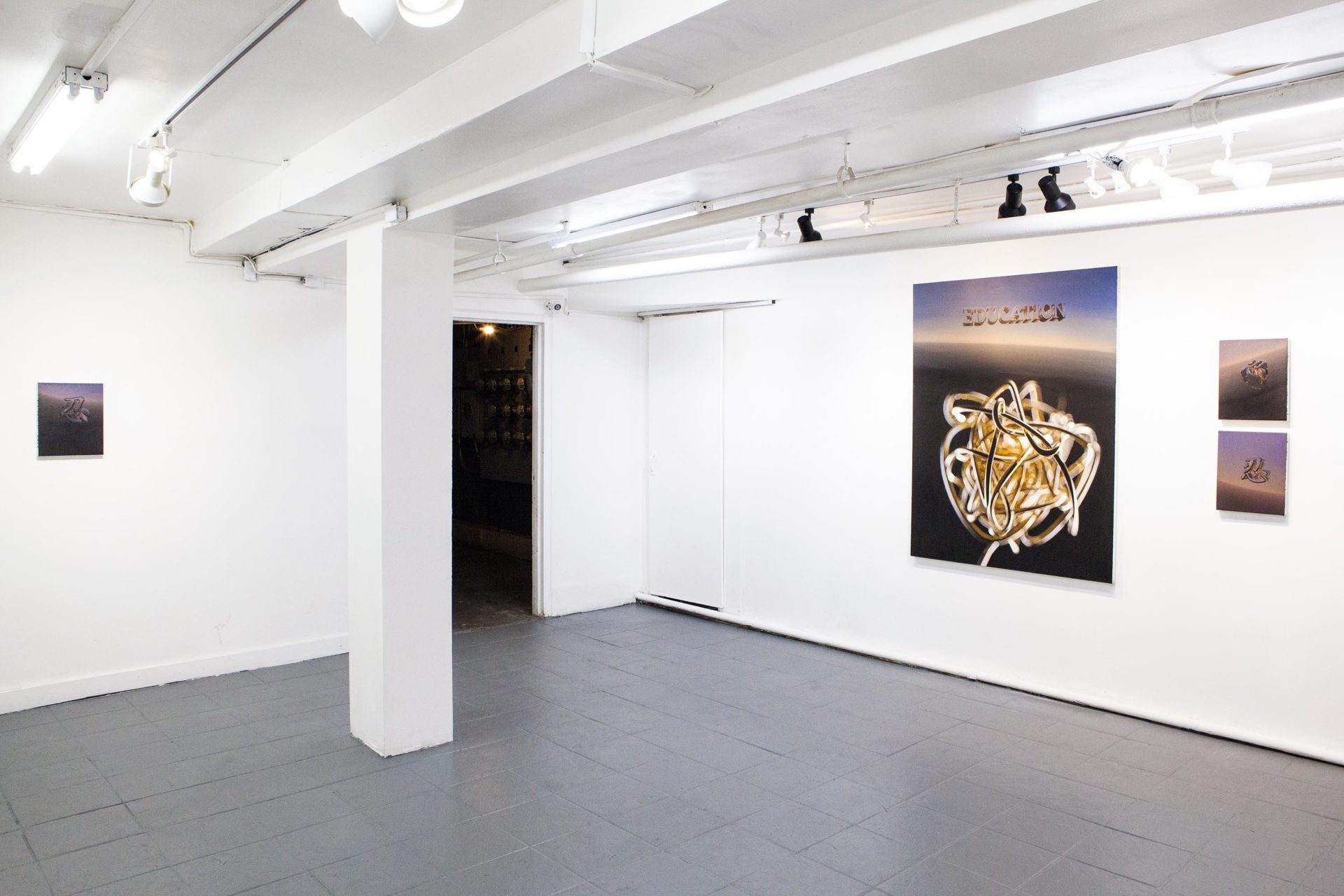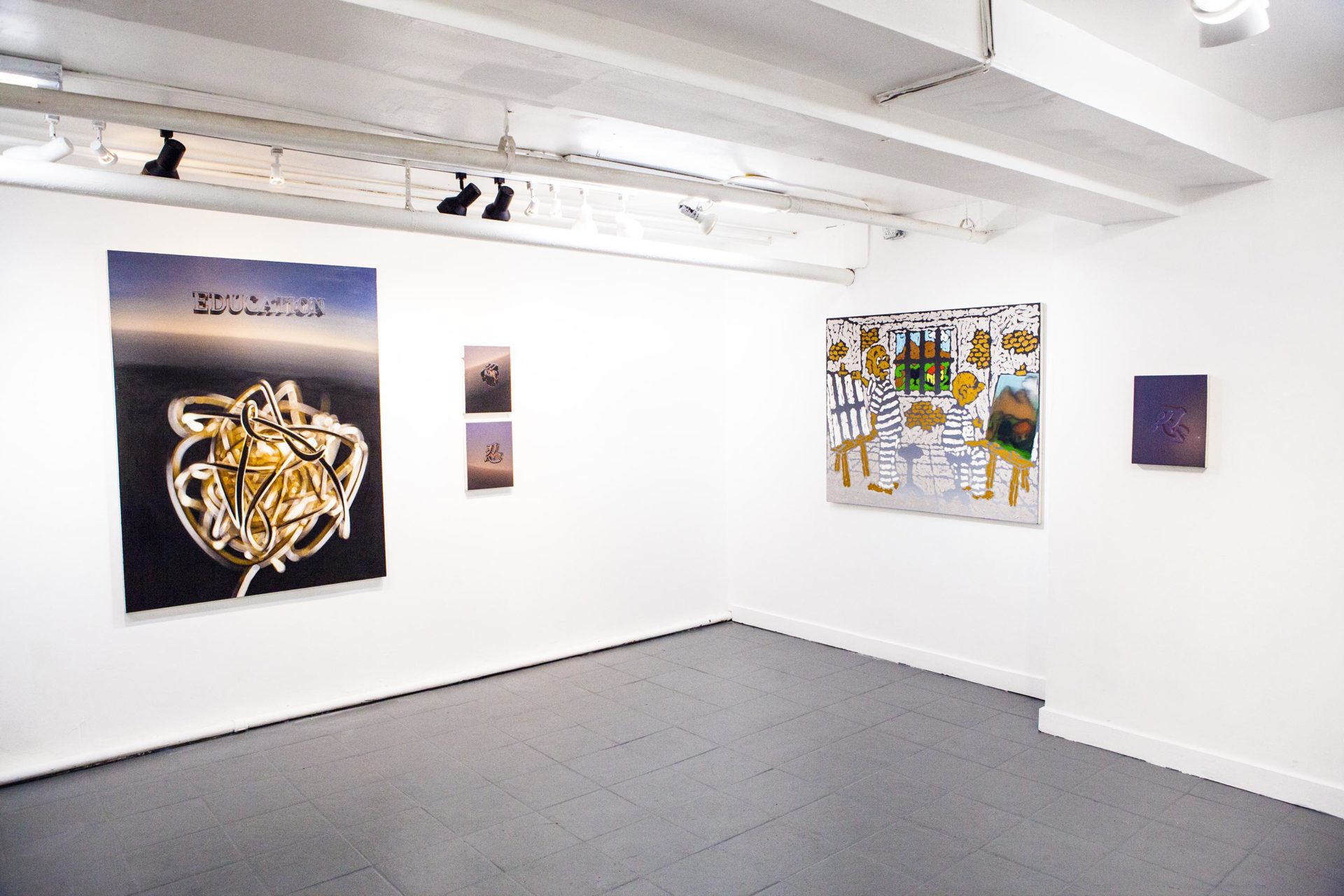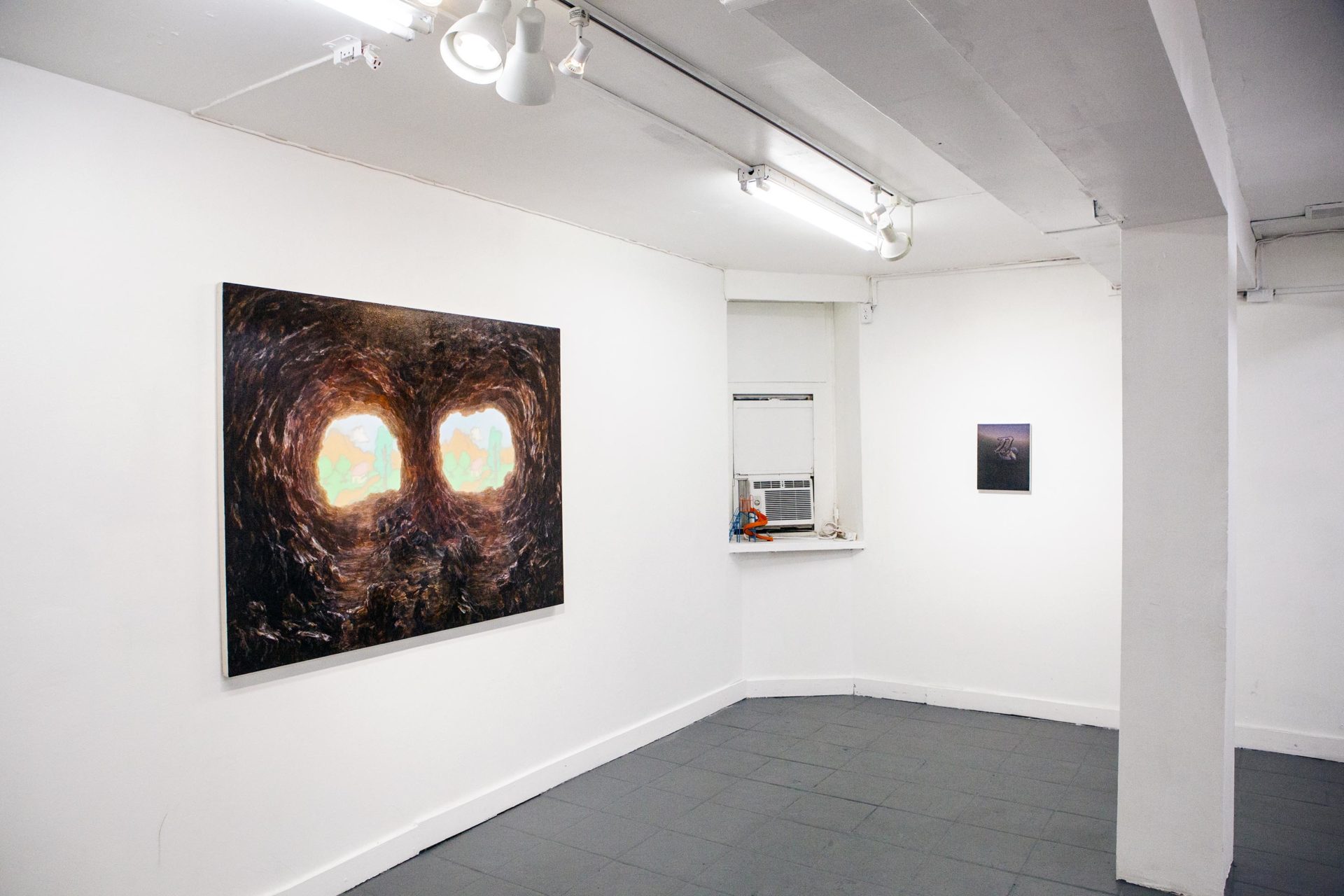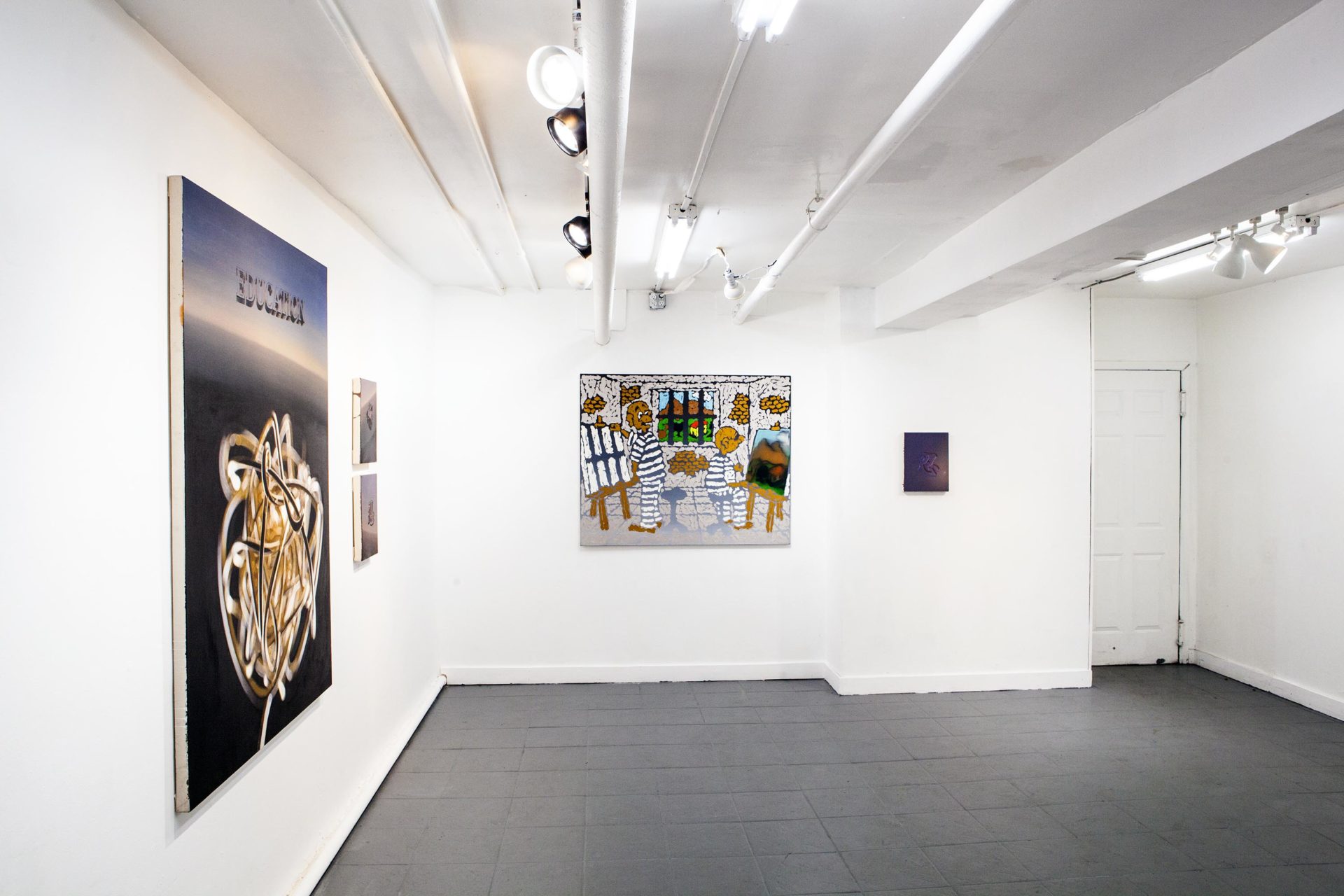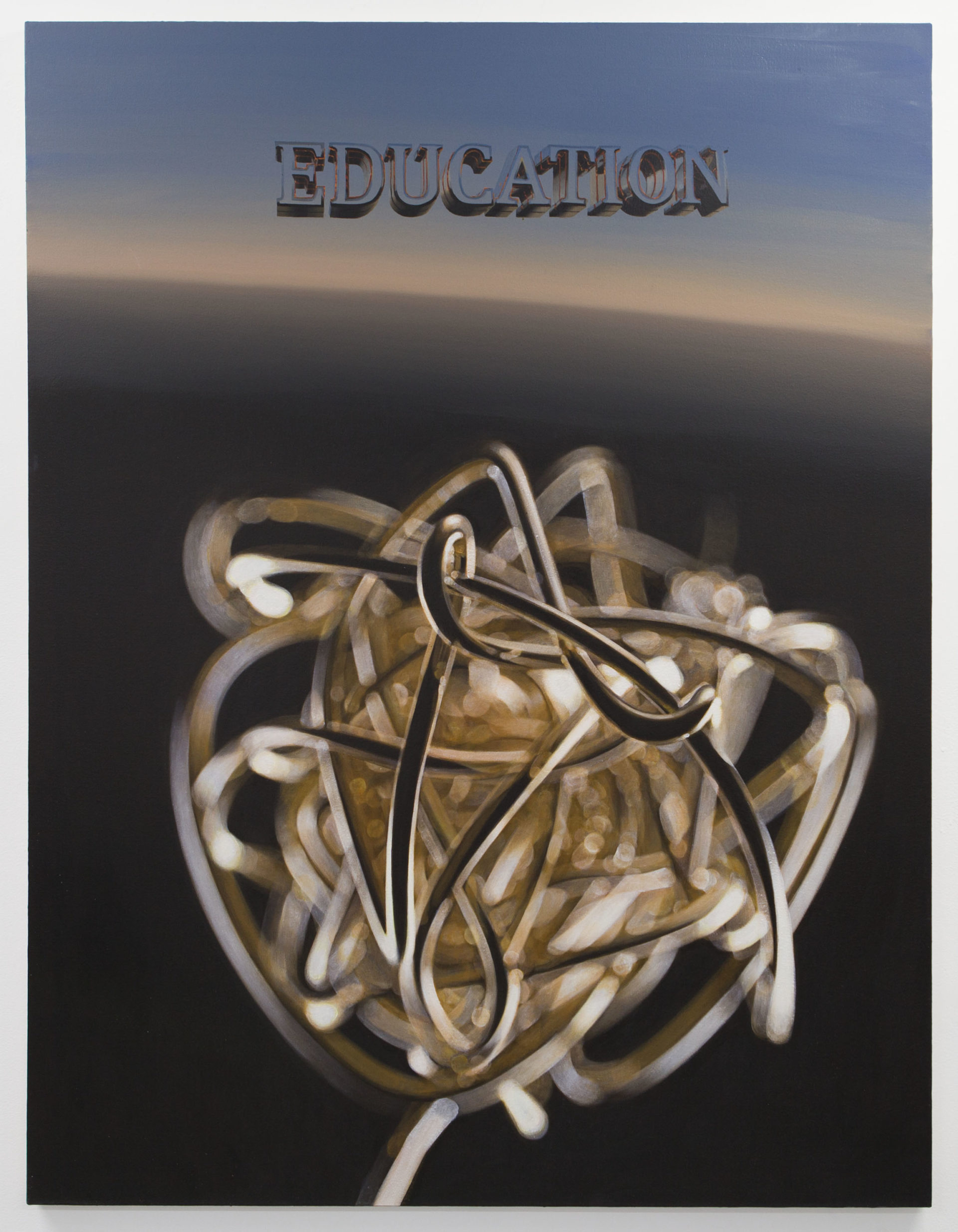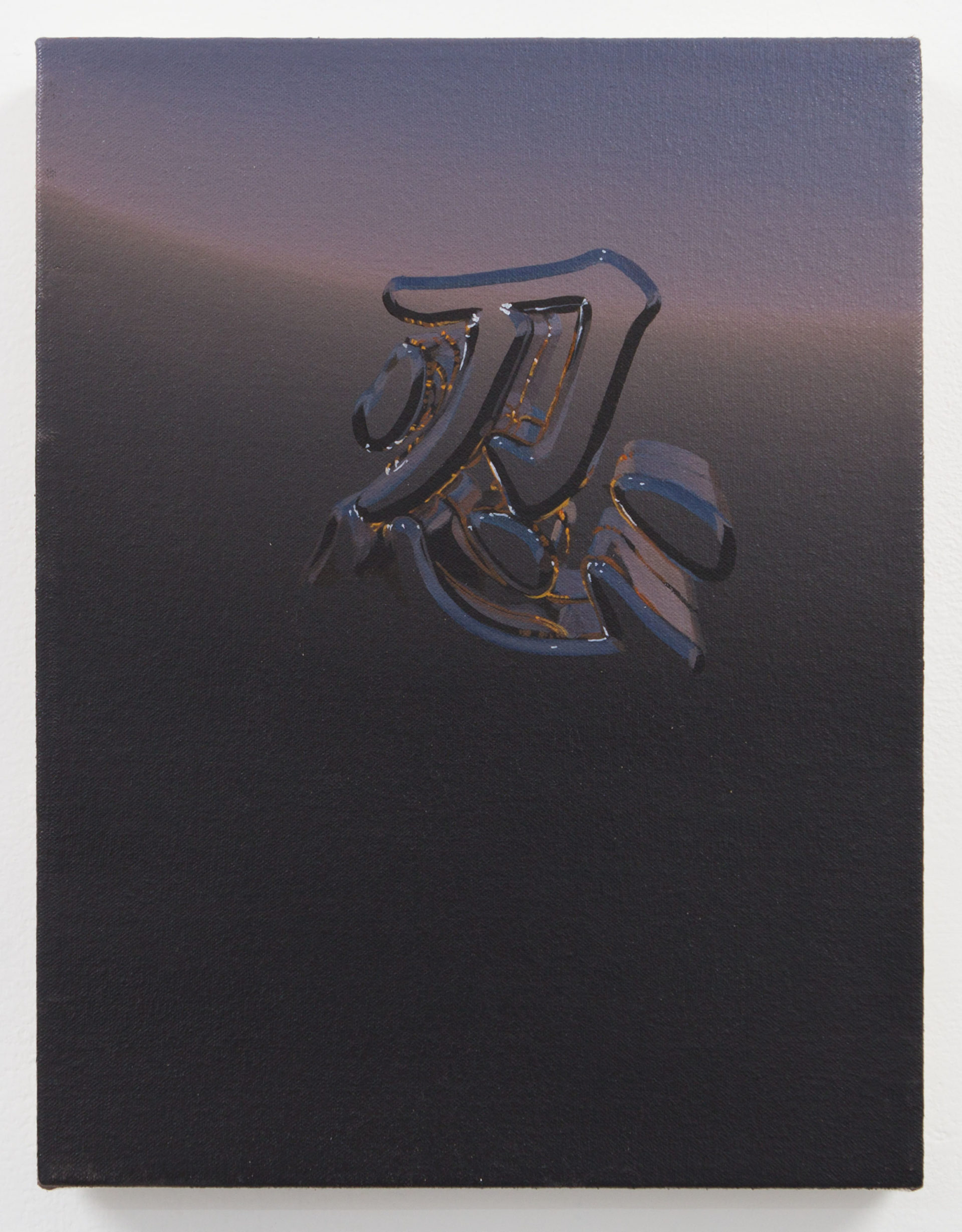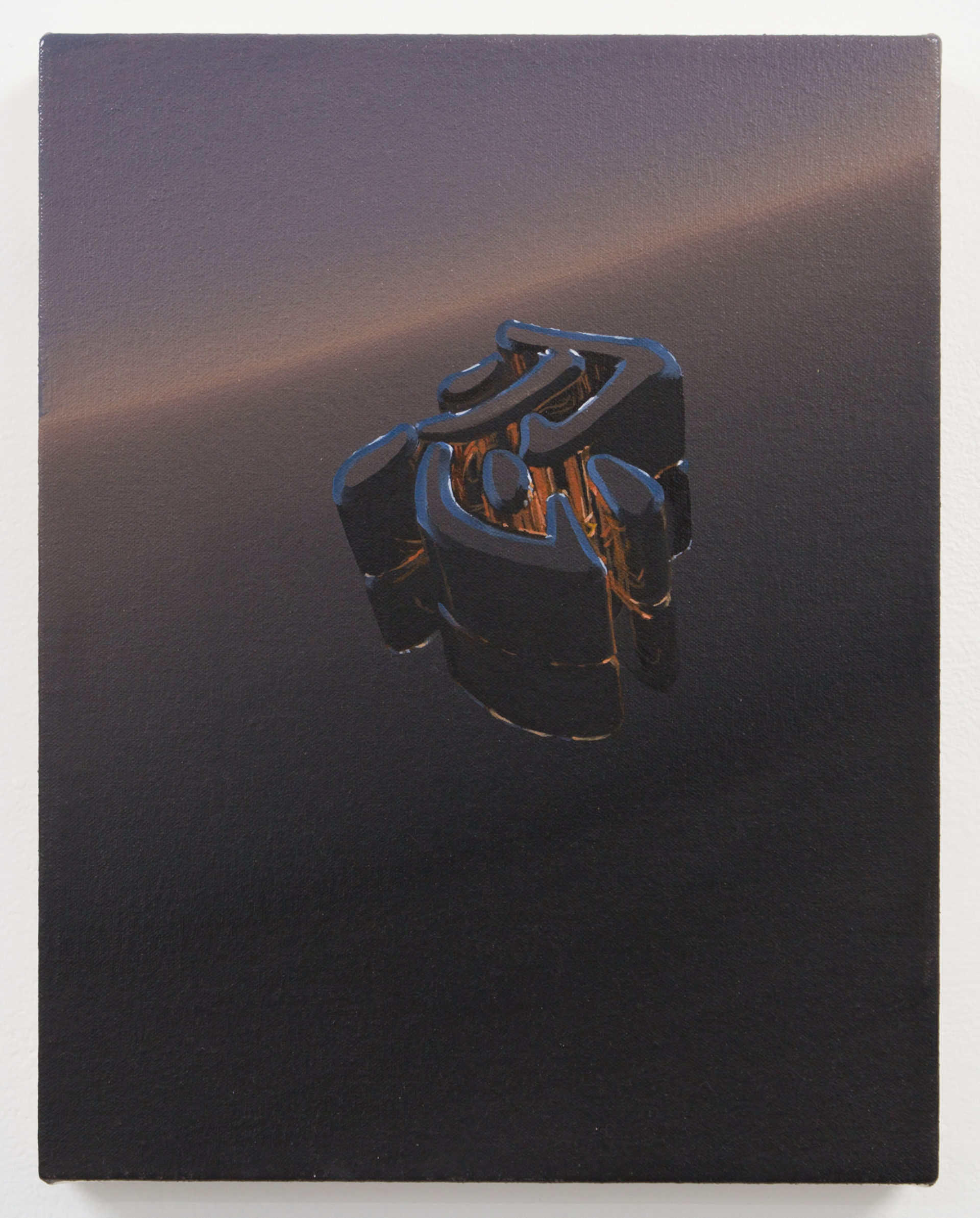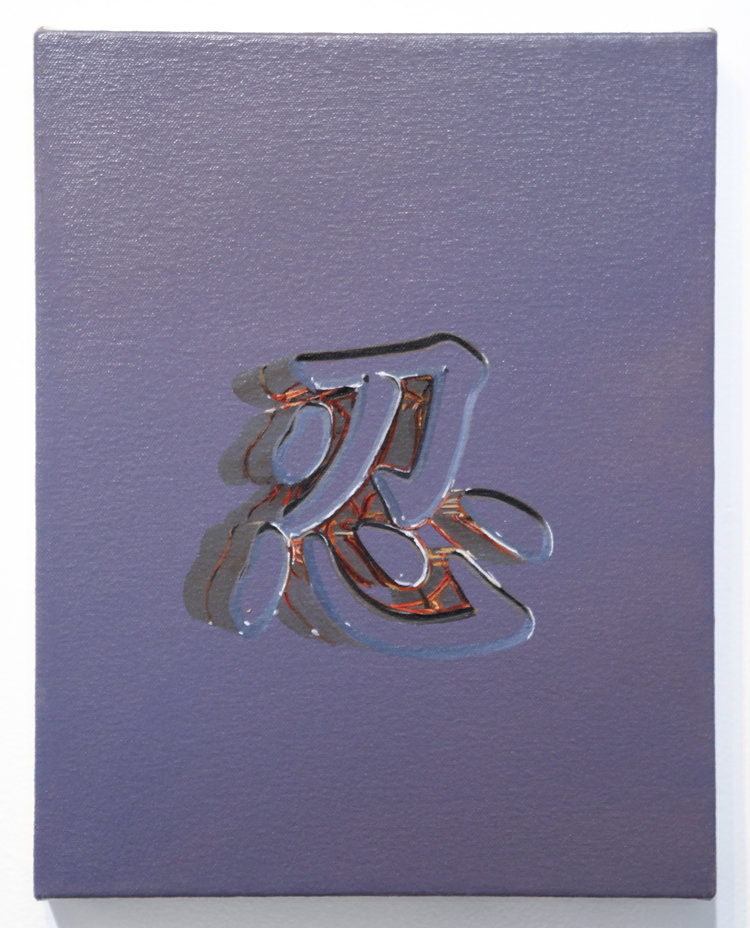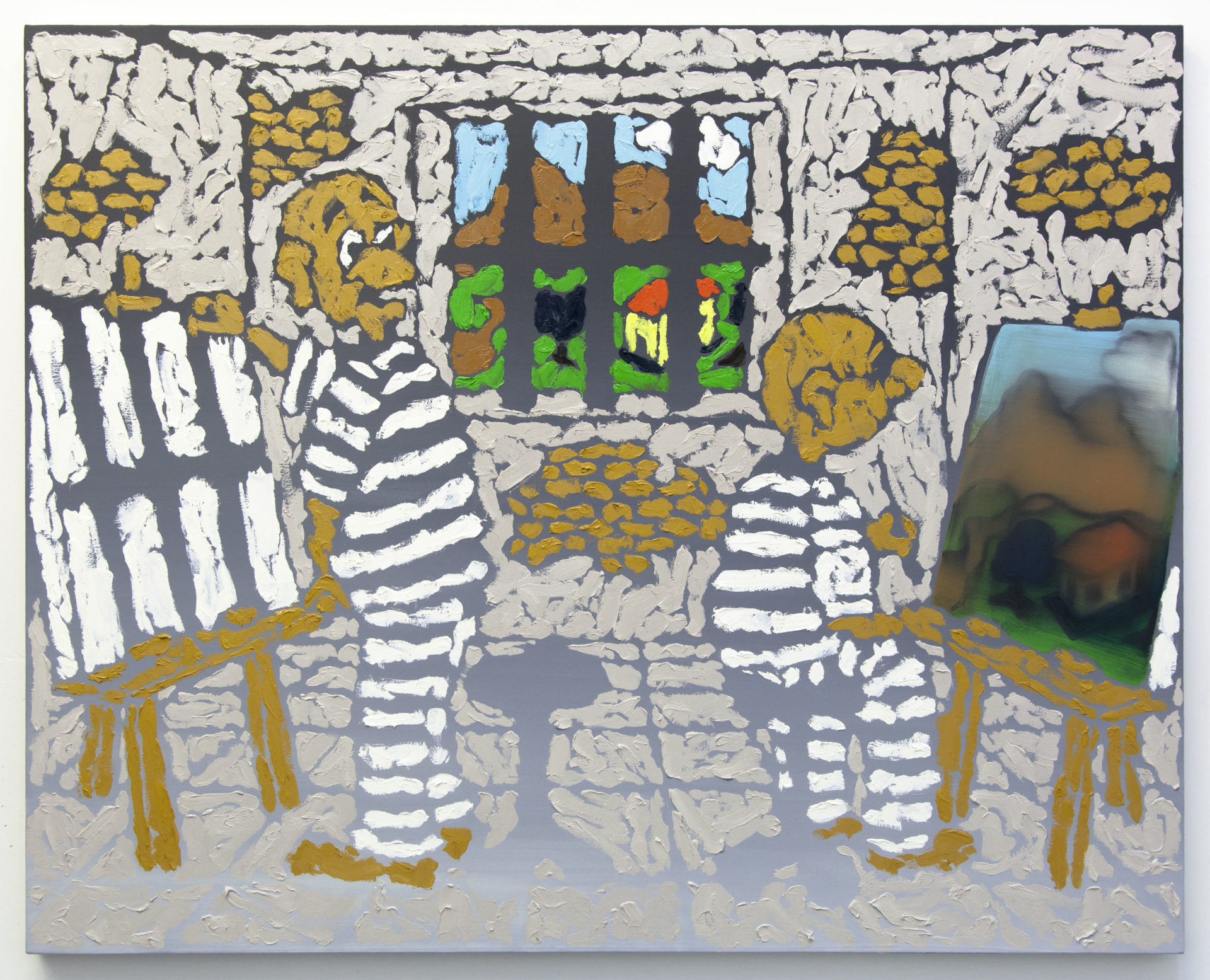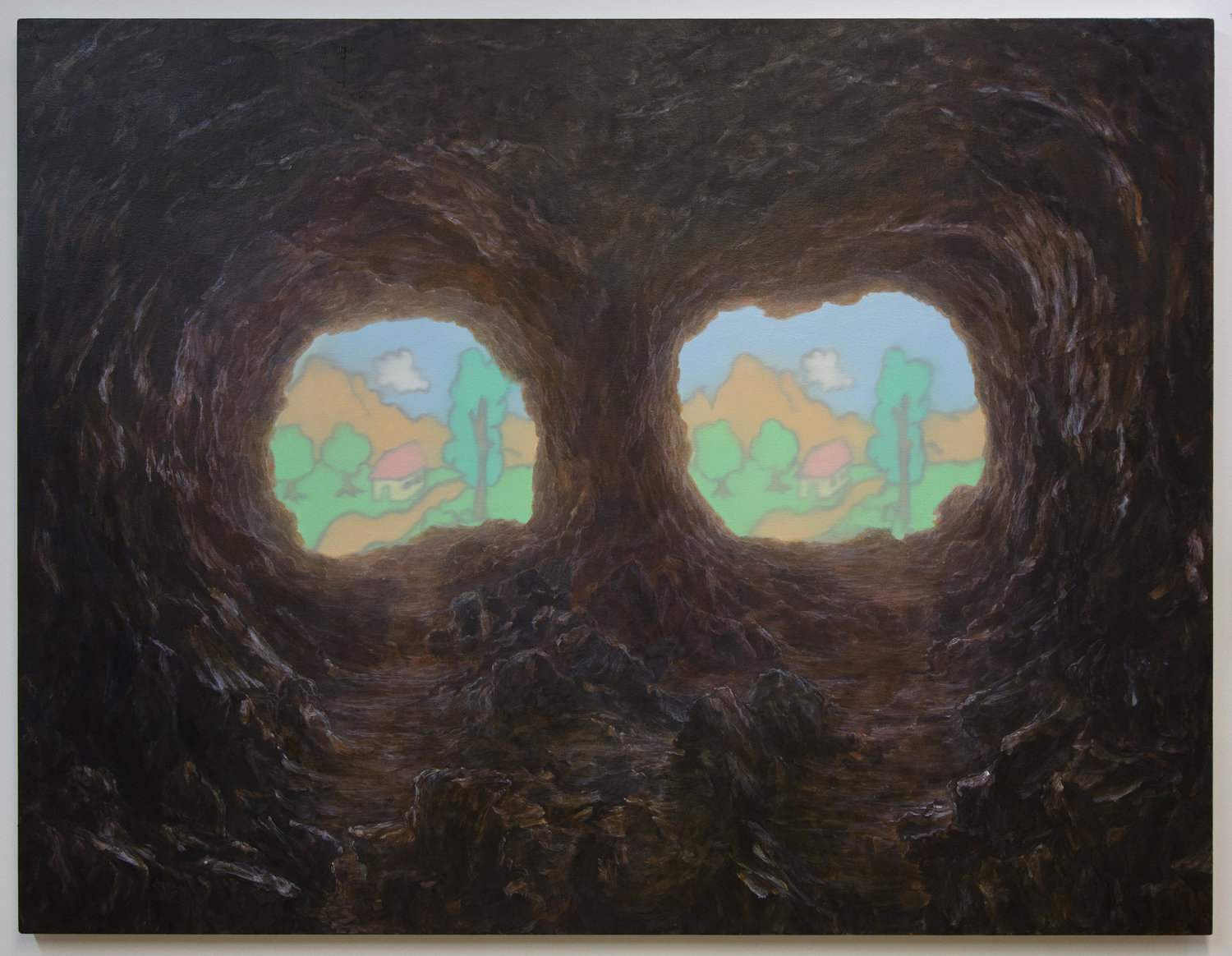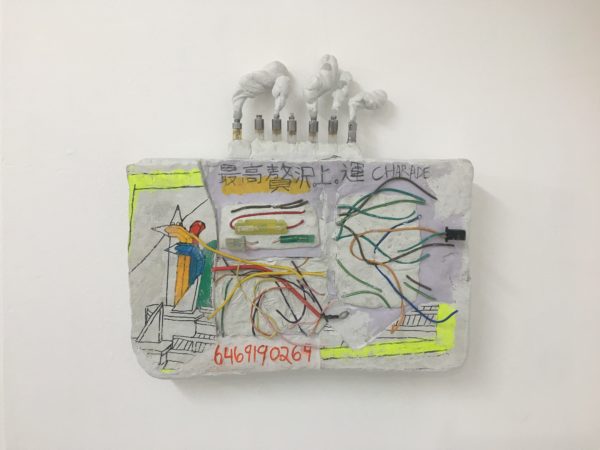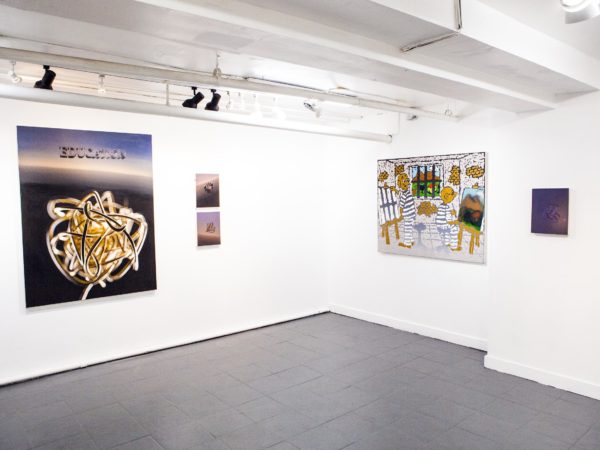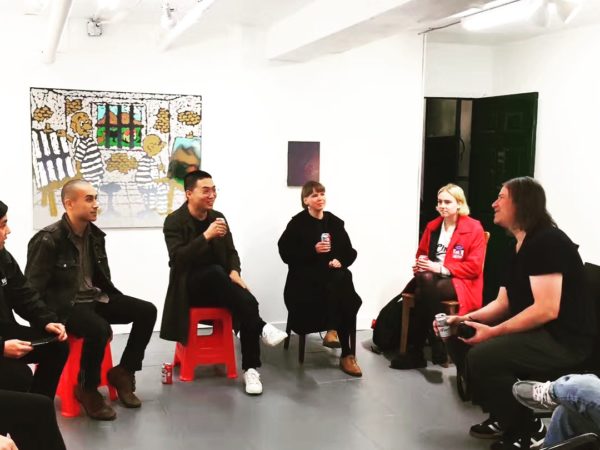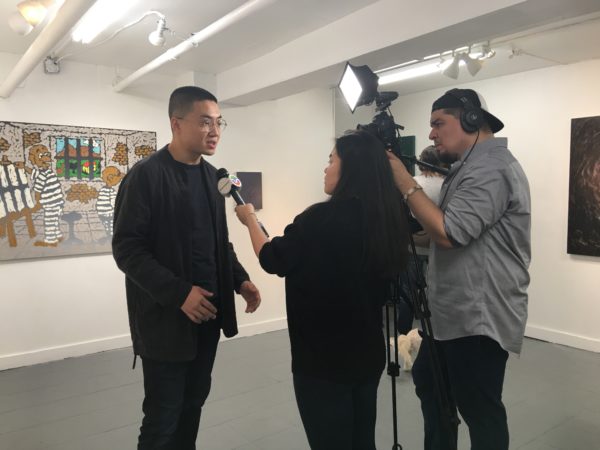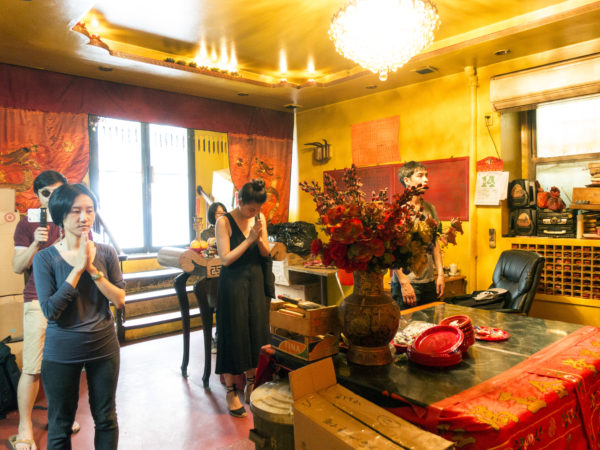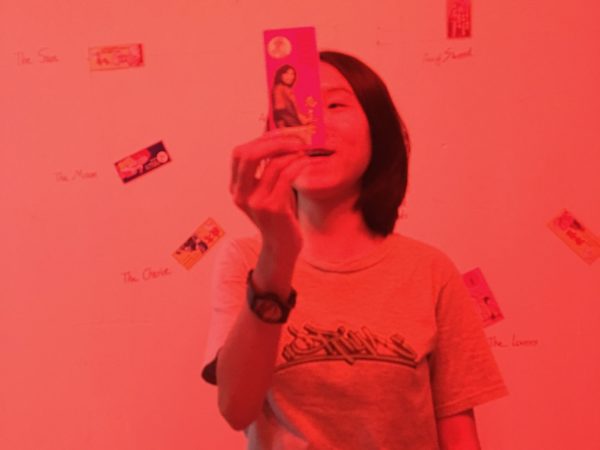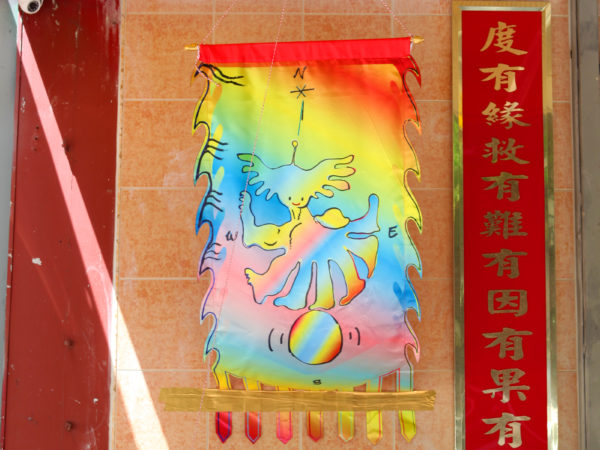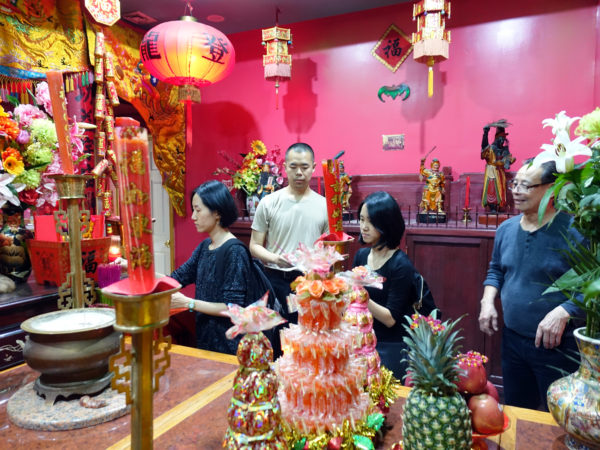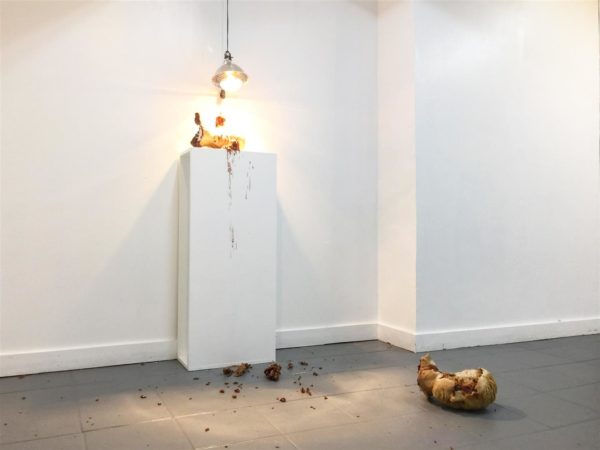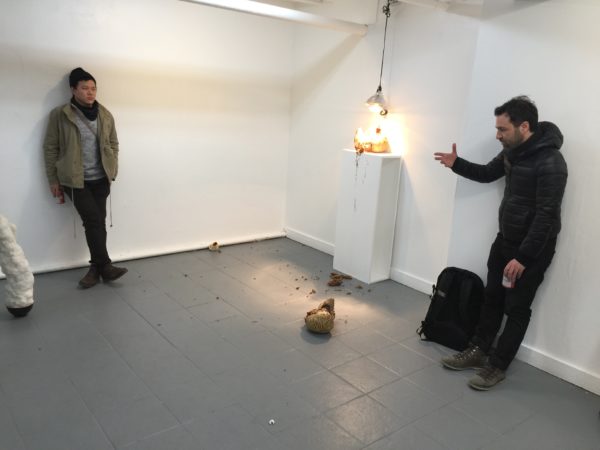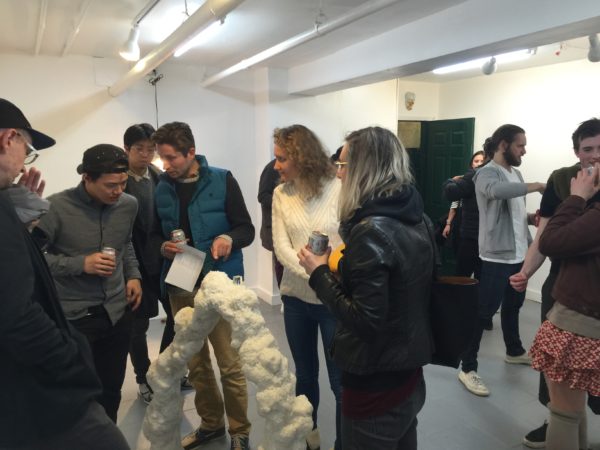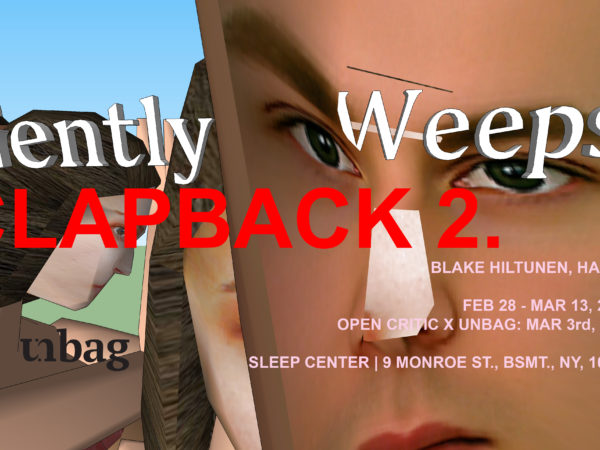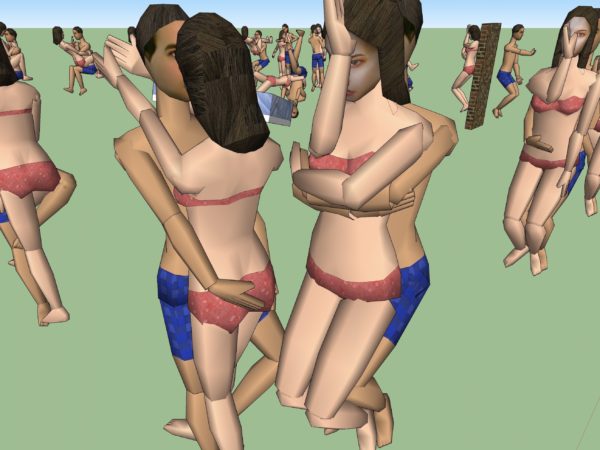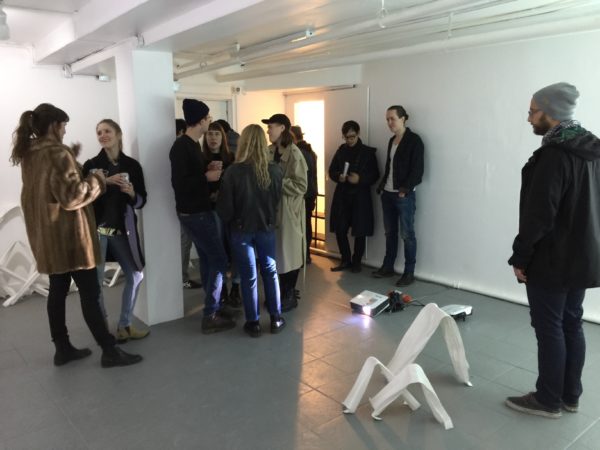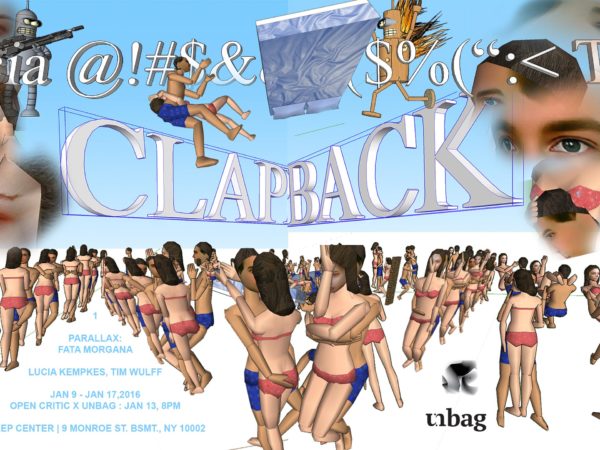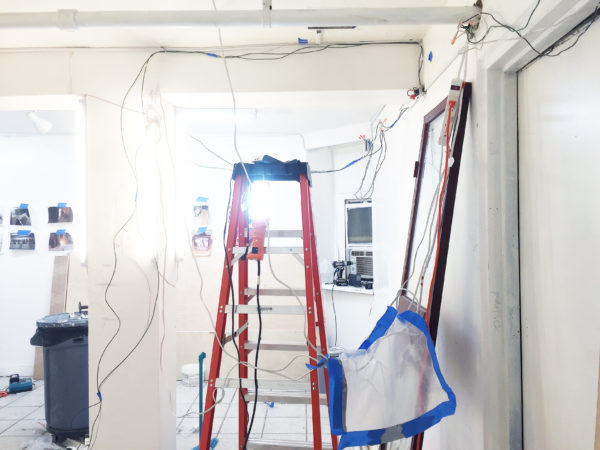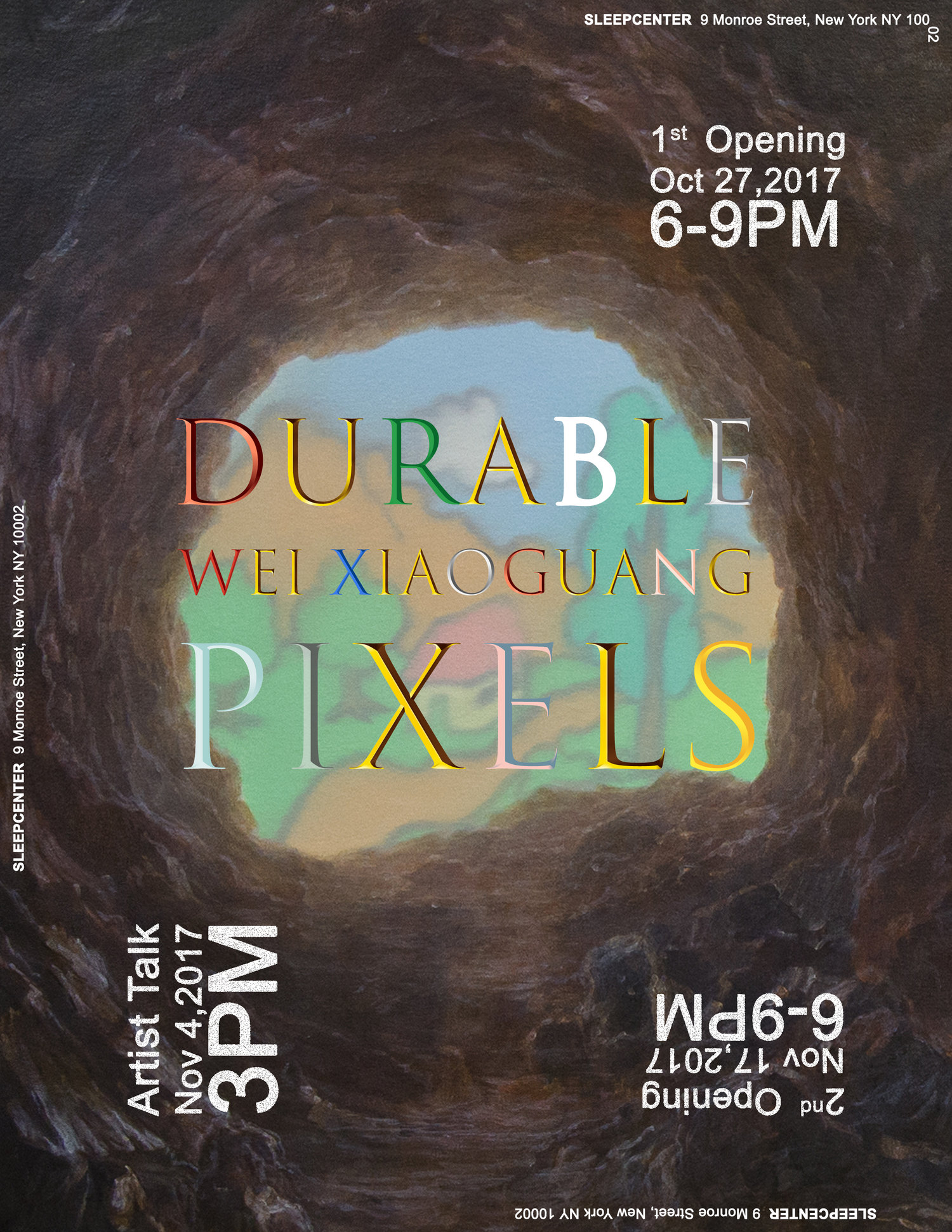
Durable Pixels
Wei Xiaoguang
October 27 – November 17, 2017
Curated by Rui Lin
Hours: Noon – 6pm Friday – Sunday,
weekdays by appointment via sleepcenterny@gmail.com
1st Opening: Friday, October 27, 2017 @ 6pm – 9pm
Guided Tour & Artist Talk: Saturday, November 4, 2017 @ 3pm – 5pm
2nd Opening The Ambassadors of Faust: Friday, November 17, 2017 @ 6pm – 9pm
SLEEPCENTER, 9 Monroe St., Bsmt, New York, NY 10002
The exhibition will consist of three phases.
In the first opening Durable Pixels, Wei Xiaoguang will exhibit his recent works on the study of digital formalism. Examining the extremely reified images in the age of contemporary technology, and the visual logics generated within, the works explore the value of painting beyond the artistic expressions, and seek an alternative opportunity for contemporary abstraction beyond the romanticism of the practical world.
I see my works as examples of how self-conscious painting mannerism functions as a critical method in this post-death-of-painting period, where both representation and abstraction do not need to hide themselves in contradictions.
I understand mannerism as a way to accept decisions in art as finite, and to conceptualize the art-making process as a predetermined set of rules and procedures that function as its building elements. Just like the more or less visible pixels (picture elements) used in digital media. Combining familiar methods and pictorial styles has been informing my works in different ways: from retinal to conceptual.
— Wei Xiaoguang
In the following three weeks, Wei will collaborate with Jeffrey D’Alessandro to conduct a study of dimensional interchange in the gallery space. D’Alessandro is a kaleidoscope mirroring of this meme age, a trendy martyr of the retro-handicraft. He uses “original handicraft” to ascend the dimensions of Wei’s drawings, making them into sculptures.
The second opening, The Ambassadors of Faust, brings forth the sculptures produced by the series of experiments, and their documentation to be displayed in the gallery space.
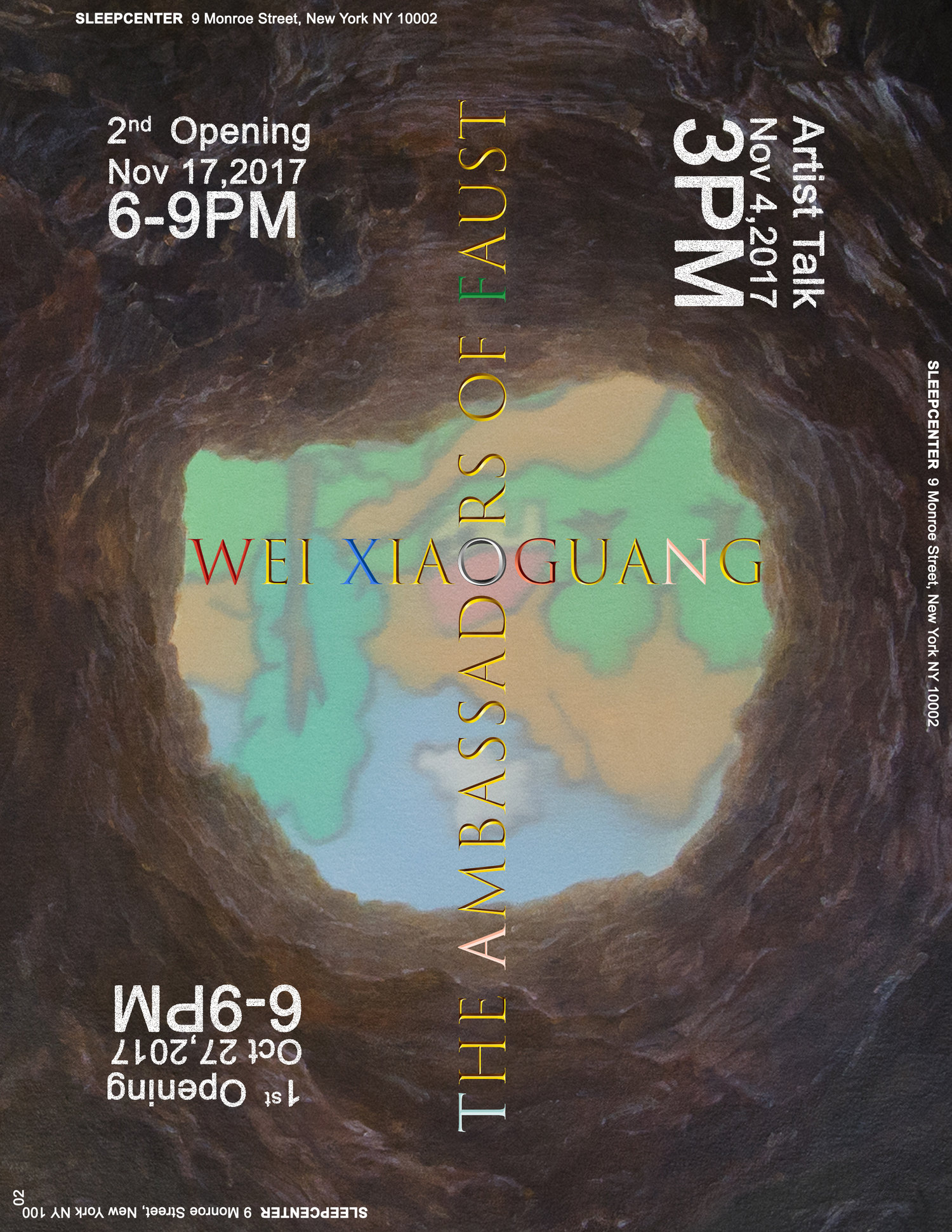
The Ambassadors of Faust
Rui Lin
1. It is said that the story of Faust was based on two men sharing the same last name: Johann Faust and Georg Faust. The stories of these two men overlapped with each other and gave rise to the folkloric legend of Dr. Johann Georg Faust, an alchemist who is erudite in esoteric knowledge and powerful magic. To acquire knowledge and power, he pledged his soul in a bargain with the devil.
2. German painter Hans Holbein der Jüngere’s oil painting, The Ambassadors(1533, oil on oak. National Gallery, London), depicted two male figures. On the left is Jean de Dinteville, French ambassador to England, and on the right, is Georges de Selve, French diplomat and the Bishop of Lavaur. The two men are surrounded by the objects symbolizing science, civilization, and truth. In front of them is a giant skull rendered in anamorphic perspective. Anamorphosis is a visual representation method that creates distorted projection or perspective. The viewer must take a specific vantage point, or use designated devices, or both to reconstitute the image. It often appears in artworks from the Renaissance, and later in the popular entertainment tabloids, as a cunning trick that conceals things desired to be exposed. In this painting, Holbein not only presented the three-dimensional objects accurately onto a flat surface, but also used anamorphosis to design eyepoint, standing point, angle of view, and field of sight, which brought a four-dimensional experience into viewing the artwork.
In this “post-truth” era that sees the fading away of religion alongside the waning of humanist progressivism, we find another wager being made. One can choose not becoming more “rational”, but have always employed a version of the scientific method to transmute abstract concepts into sensible matter. Fine art has always been a method indispensable in the development of Western philosophy and science. While most of pop culture today depicts the unknown as a fearful abstract entity (e.g. Interstellar, Ant-Man), artist willingly courts the abyss that lies beyond the precipice. Creativity, like making a hypothesis, requires a kind of daring that is still tempered by a mindfulness that one has-yet-to-know. To create is to traverse dimensions of being, to bargain with the devil. The experimentation between Wei and D’Alessandro is akin to the combination of Johann and Georg, which completes the image of an alchemist, a cross/multi-disciplinary role important in the development of Western collective knowledge since the age of Renaissance – the image of Dr. Faust.
Wei and D’Alessandro are also the ambassadors in the painting of Holbein. They intersect with each other in Brooklyn’s Bushwick, a collective residential neighborhood for the young creatives, that recognizes innocent ignorance while filled up with the signs of science, civilization, and truth, often disassembling the all-around duties of the “Renaissance man” and distributing/misplacing to its individual residents. At the end of this program, now that possibly settles the dusty discussions in-between “production” and “dimension”, these two young men, once as observers, peeking through the caves/eye-sockets in Wei’s painting Untitled (Caves), 2017, inspecting the audience’s reaction toward the products of their experiments, perhaps they will gladly embrace the memento mori implicated in Holbein’s anamorphic skull: “remember thou shalt die”.
———–
Born in 1986 in Inner-Mongolia Province, China, Wei Xiaoguang received his BFA from the Central Academy of Fine Art, Beijing China and his MFA from Hunter College in New York. The artist lives and works in New York.
